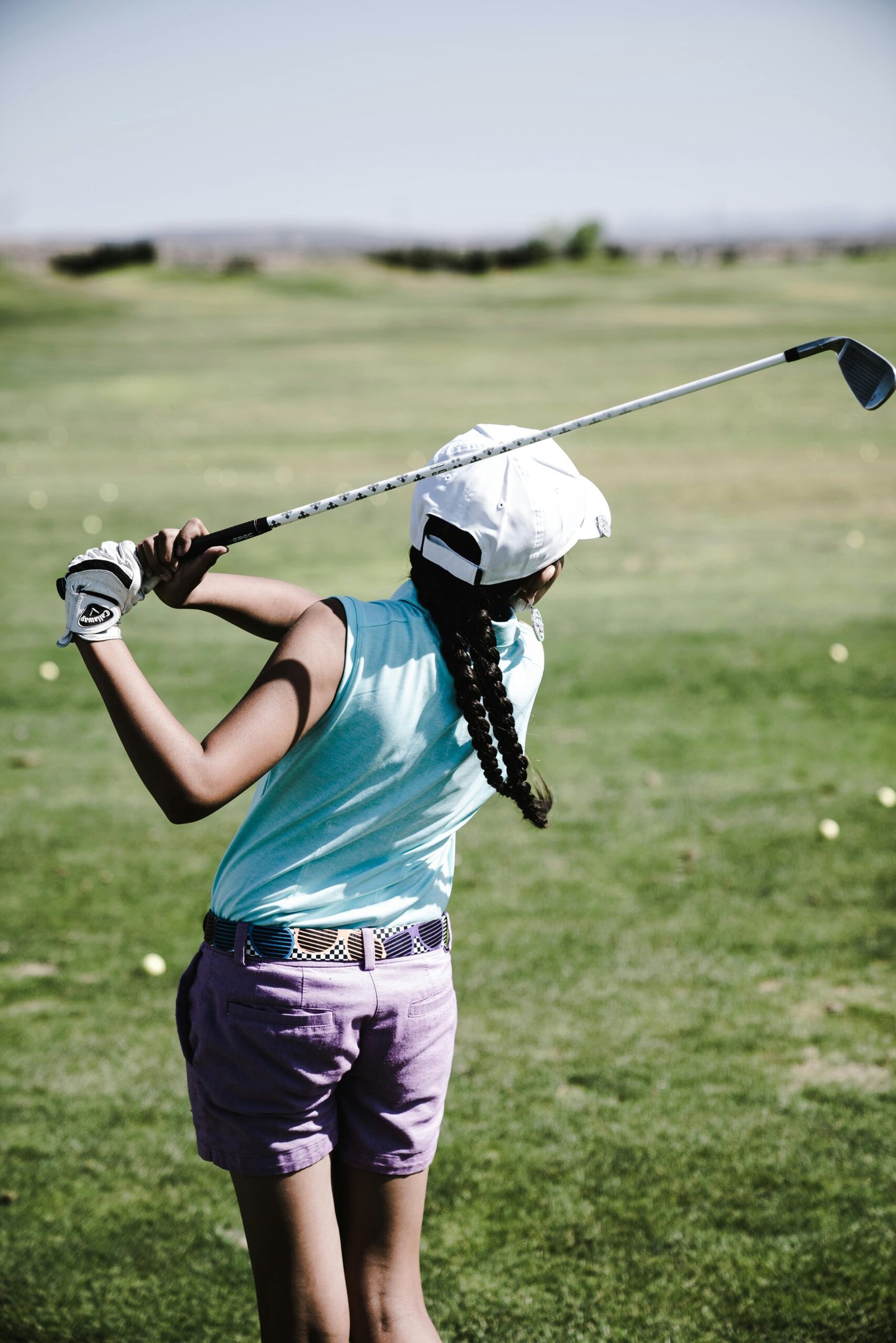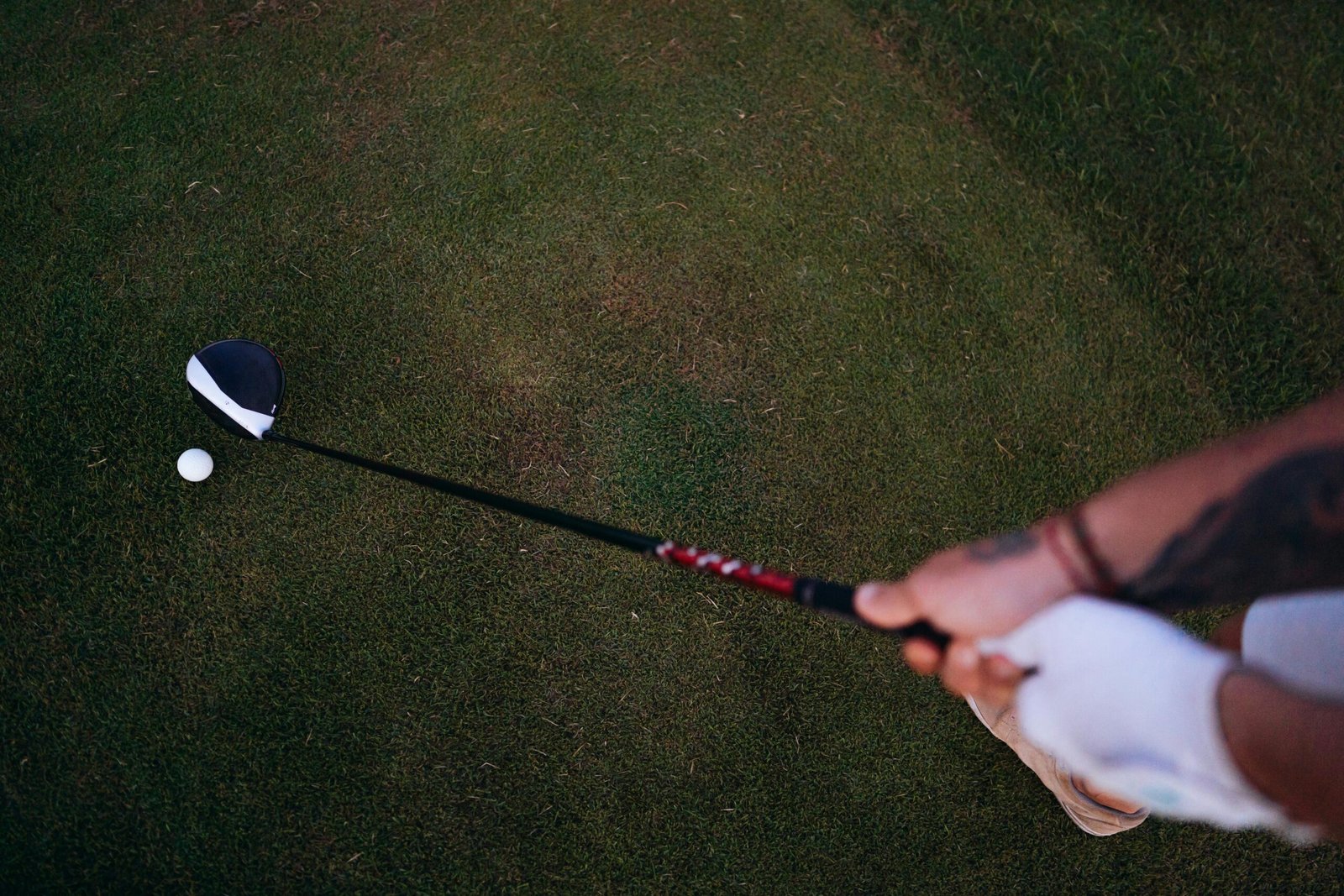Understanding the Basics of Golf
Golf is a sport that combines precision, skill, and physical prowess, attracting players of all ages and backgrounds. At its core, the fundamental objective of the game is to navigate a series of golf holes by hitting a ball into each hole in the fewest strokes possible. The first step is learning how to hit a golf ball for beginners. This may appear straightforward, yet the intricacies of golf require a deeper understanding of various components, especially for beginners.
As with any sport, golf comes with its own set of terminology. Understanding terms such as “tee,” “fairway,” “green,” and “putting” is essential for beginners. The “tee” is the area where players start each hole, while the “fairway” refers to the well-maintained grass leading up to the green. The “green” is the area surrounding the hole, characterized by shorter grass, which makes putting easier. Familiarizing oneself with these terms is the first step in cultivating a comprehensive knowledge of the game.
For beginners, mastering the fundamentals is a crucial aspect of learning how to hit a golf ball effectively. This includes honing grip, stance, posture, and swing mechanics. A solid foundation will not only enhance performance but also improve the overall enjoyment of the game. Understanding the basics empowers beginners to progress at their own pace, ultimately leading to greater satisfaction on the golf course. Developing these skills will pave the way for more advanced techniques as players gain confidence in their abilities.
As you embark on your golfing journey, remember that each stroke taken on the course represents an opportunity for growth. By focusing on the basics, beginners can steadily improve their capacity to hit a golf ball, fostering a greater appreciation for this timeless sport.
Proper Stance for a Confident Shot
Achieving a proper stance is fundamental for those learning how to hit a golf ball for beginners. The right stance can create a solid foundation for a successful shot, affecting both balance and power. First, begin by ensuring that your feet are shoulder-width apart, which provides a stable base. Your weight should be distributed evenly between both feet, allowing for a grounded position that can absorb the forces involved in swinging the club.
Next, foot placement is critical. Ensure that your toes are pointed slightly outward, which helps in maintaining balance during the swing and allows for smoother weight transfer. Additionally, shoulder alignment should be parallel to your target line, promoting accuracy. When you align your shoulders correctly, you can enhance your aim and increase the probability of hitting the ball straight.
Posture also plays a significant role in how to hit a golf ball effectively. Stand upright with a slight bend at the hips. Your arms should hang naturally and not be overly extended or cramped, allowing for a fluid swing. Knee flex is equally important; keep your knees slightly bent, which aids in stability and encourages a responsive stance, capable of quick adjustments.
The combination of these elements contributes to a stance that supports powerful drives and controlled shots. Beginners should practice adjusting their stances by experimenting with foot positions and weight distributions to find what feels most comfortable while still adhering to the fundamental principles described. By refining the stance and understanding its importance, beginners can significantly enhance their overall performance on the golf course.
Bridgestone Golf e12 Straight Matte Green
$34.99
NEW! Optimal Flight System
IMPROVED DISTANCE – Reduced hooks and slices for improved distance
INCREASED FORGIVENESS – Contact Force Dimple for reduced side spin and increased forgiveness
INNOVATIVE – Now featuring Innovative MindSet Technology
Available in White, Matte Green, and Matte Yellow
The Perfect Grip for Maximum Control
One of the foundational aspects of learning how to hit a golf ball for beginners is mastering the grip. The grip serves as the direct link between the golfer and the club, making it essential for achieving maximum control over shots. There are three main types of grips that beginners can choose from: the overlapping grip, the interlocking grip, and the ten-finger grip. Each type has its unique characteristics and caters to different preferences and playing styles.
The overlapping grip, often favored by many seasoned golfers, involves placing the pinky finger of the trailing hand over the index finger of the lead hand. This method helps create a unified hold on the club, promoting stability. On the other hand, the interlocking grip, popularized by legends like Jack Nicklaus, intertwines the pinky of one hand with the index finger of the other. This grip can be particularly beneficial for players with smaller hands, ensuring that control is not compromised.
Finally, the ten-finger grip, or baseball grip, features all ten fingers on the club, similar to holding a baseball bat. This grip can be advantageous for beginners, as it allows for a relaxed hand position and can ease the transition into the golf swing.
In addition to grip type, grip pressure is another crucial factor that can significantly influence shot accuracy and distance. Beginners should aim to maintain a firm but relaxed grip. A grip that is too tight can restrict the natural motion of the wrists, while a grip that is too loose may lead to a lack of control during the swing. To find the perfect grip, beginners can follow a few simple steps: hold the club with the lead hand first, ensuring its grooves fit comfortably in the fingers, and then add the trailing hand in the chosen grip style. Practicing this will enhance overall control when attempting how to hit a golf ball for beginners.
Mastering Swing Mechanics
Understanding the mechanics of a golf swing is essential for beginners aiming to learn how to hit a golf ball effectively. The swing can be broken down into five key components: takeaway, backswing, downswing, impact, and follow-through. Each of these phases plays a crucial role in executing a successful shot.
The takeaway marks the beginning of the swing, where the club is pulled back away from the ball. Position your hands properly on the club, maintaining a neutral grip, and initiate the takeaway smoothly, ensuring that the clubhead remains low to the ground initially. This sets the tone for a consistent swing. The backswing follows, where you rotate your shoulders, hips, and arms away from the ball. Focus on maintaining a straight lead arm and allow your wrists to hinge naturally. A proper backswing generates power for the upcoming downswing.
Next is the downswing, which is critical in how to hit a golf ball for beginners. This phase involves shifting your weight to your front foot while your arms and club drop back towards the ball. Maintain a smooth, controlled motion rather than rushing through this stage, as a balanced and synchronized downswing greatly influences the quality of your shot.
Impact occurs when the club strikes the ball. Aim to hit the ball with a square clubface, which directs the ball straight down the fairway. The follow-through completes the swing, demonstrating the importance of balance and integration. A proper follow-through indicates that you maintained your tempo and rhythm throughout the swing.
Tempo and rhythm are vital elements, as they contribute to the overall smoothness and effectiveness of your swing. By focusing on balance and gradually refining each component, beginners can develop a reliable swing that consistently delivers good results on the course. With practice, the mechanics of hitting a golf ball will become second nature, allowing players to enjoy the game even more.
Common Mistakes to Avoid
As beginners venture into the world of golf, understanding how to hit a golf ball effectively is crucial. However, many novice players often make common mistakes that hinder their progress. One prevalent error relates to stance. An improper stance can lead to poor balance and misalignment, resulting in inconsistent shots. A good starting point is to ensure that your feet are shoulder-width apart and that your weight is evenly distributed. This foundation allows for better stability during the swing.
Another frequent mistake lies in the grip. Many beginners tend to grip the club too tightly, which can restrict swing motion and reduce the shot’s accuracy. Instead, players should strive to maintain a relaxed grip that allows for a natural swing arc. Using the correct grip pressure is key; it should feel firm yet flexible, enabling a more fluid motion through the ball.
Swing mechanics also play a pivotal role in how to hit a golf ball for beginners. Often, new golfers try to hit the ball too hard rather than focusing on technique. A common anecdote shared by experienced players is to “swing easy and let the club do the work.” This philosophy emphasizes control and technique over brute strength. Practicing smoother swings can not only improve shot consistency but also enhance distance.
To combat these mistakes, beginners should implement specific drills. For stance improvement, practicing alignment drills with clubs placed on the ground can help visualize proper foot positioning. For grip issues, repeating the grip pressure exercise helps in developing muscle memory. Regularly integrating these corrective practices into your routine will enhance your understanding of how to hit a golf ball effectively, allowing for more satisfying experiences on the course.
Using Equipment to Your Advantage
When embarking on the journey of learning how to hit a golf ball for beginners, understanding the importance of equipment is paramount. Selecting the right golf clubs can significantly influence your performance on the course. As a beginner, you may find yourself overwhelmed by the variety of clubs available, which primarily consist of drivers, irons, and putters. Each club serves a specific purpose, and using the appropriate one for each situation can enhance your ability to hit the ball successfully.
The driver, typically used for long-distance shots off the tee, is designed with a larger clubhead to provide a greater surface area for contact with the golf ball. On the other hand, irons are versatile clubs suited for various distances and lies on the course. They come in numerous specifications, with varying degrees of loft and shaft length influencing your swing mechanics. For beginners, investing in a set of game improvement irons can provide more forgiveness, helping you achieve better results even if your technique is not yet perfected.
Additionally, the putter is crucial for those final strokes on the green, where precision is key. Familiarizing yourself with a comfortable putter that matches your stroke style can improve your confidence and close out holes effectively. It is advisable to seek professional fitting when selecting clubs, as a fitting ensures that the specifications align with your height, swing style, and physical capabilities. This individualized approach can optimize your performance and provide a solid foundation for learning how to hit a golf ball for beginners.
Recommendations for beginner-friendly equipment often include lightweight clubs with flexible shafts that accommodate a slower swing speed, which is common among new players. Clubs specifically designed for beginners have larger club faces and higher lofts, simplifying the process of achieving proper ball contact. Utilizing the right equipment is essential in your quest to master golf, ultimately facilitating a smoother progression in your skills.
Importance of Practice and Patience
When embarking on the journey of learning how to hit a golf ball for beginners, it is essential to understand that regular practice and a patient mindset are fundamental components of improvement. Golf is a sport that requires not only physical skill but also mental fortitude. Establishing a consistent practice routine allows you to reinforce the techniques you have learned, making them feel more instinctual over time.
Incorporating specific drills into your practice can be an effective way to enhance your skills. For example, focusing on your grip, stance, and swing mechanics during practice sessions can yield significant benefits. Beyond just hitting balls, understanding how each component affects your overall performance will contribute to your development as a golfer. Utilizing practice aids, like alignment tools and swing analyzers, can help you refine your technique further.
While it is beneficial to practice regularly, it is equally important to maintain a patient approach. Learning how to hit a golf ball for beginners often comes with challenges, and it is crucial to manage frustrations that may arise. Setting realistic goals can foster a positive mindset and provide a roadmap for your improvement. Celebrate the small victories, and remember that mastery in golf is a gradual process.
Moreover, choosing the right practice setting can enhance your experience. Driving ranges offer an opportunity for focused practice, while golf simulators can provide valuable feedback on your performance. These environments are conducive to experimenting with different techniques in a relaxed atmosphere. Over time, consistent practice in these settings will lead to noticeable improvements, instilling you with confidence as you progress in your golfing journey.
Taking Lessons and Learning from Professionals
When embarking on the journey of learning how to hit a golf ball for beginners, one of the most effective strategies is to seek professional instruction. Engaging with qualified golf instructors not only accelerates the learning process but also lays the foundation for proper technique, enabling novices to avoid the pitfalls of ingrained bad habits that can hinder progress. Professional lessons provide structured learning, which is essential in mastering the complexities of the game.
Golf coaches are trained to identify mistakes that beginners might not even recognize, offering tailored feedback that is crucial for improvement. This professional oversight ensures that learners develop correct mechanics, swing patterns, and overall strategies early on. Understanding the nuances of grip, stance, and body alignment from an experienced instructor significantly enhances the ability to successfully learn how to hit a golf ball, making the transition smoother and more effective.
Finding a qualified golf instructor can be accomplished through various avenues. Local golf clubs often offer lessons ranging from individual to group formats, catering to different needs and learning preferences. Additionally, online platforms have emerged, offering virtual coaching sessions that can be a convenient alternative for those with tight schedules. These resources provide a wealth of options to get started, regardless of where one is based.
Ultimately, investing in professional lessons is a key component in minimizing frustration and maximizing enjoyment of the game. For those who aspire to excel in golf, a solid foundation provided by expert guidance not only fosters skill development but also instills confidence necessary for on-course success. As beginners learn how to hit a golf ball accurately and consistently, the benefits of structured feedback and professional insight become apparent, paving the way for long-term improvement and enjoyment of the sport.
The Role of Mental Game in Golf
The mental aspect of golf often plays an equally important role as the physical techniques involved in the sport. For beginners looking to understand how to hit a golf ball effectively, recognizing the mental challenges can be a game-changer. Firstly, visualization is a powerful mental strategy; it helps to create a clear picture of the desired shot before making it. By visualizing the trajectory and landing of the golf ball, players can enhance their focus, which is essential for achieving consistency.
Staying focused during a round of golf is crucial. Beginners may find it beneficial to develop a pre-shot routine to help center their thoughts and reduce distractions. This routine can include taking a deep breath, assessing the lie of the ball, and focusing on the intended target. The importance of concentration cannot be overstated, as distractions can lead to mistakes. Golfers should also cultivate a positive mindset, reinforcing their confidence and resilience, especially after a poor shot. This mental positivity acts as a buffer against frustrations that may arise during the game.
Moreover, building mental resilience is vital for handling the pressures experienced on the course. Beginners might encounter moments of self-doubt, but employing strategies such as self-talk or mindfulness can help mitigate these feelings. Emphasizing the process of improvement rather than only the outcome can also promote a healthier mental approach. By understanding that golf is not merely about physical skill but also about mental fortitude, beginners will be better equipped to handle the complexities of the game. This holistic perspective is fundamental for anyone aiming to master how to hit a golf ball successfully and enjoyably.






